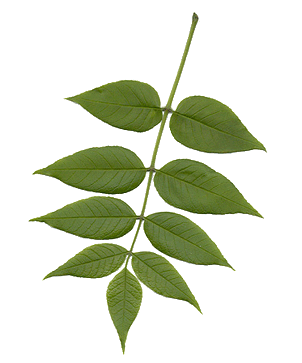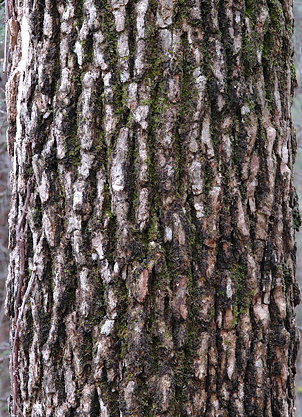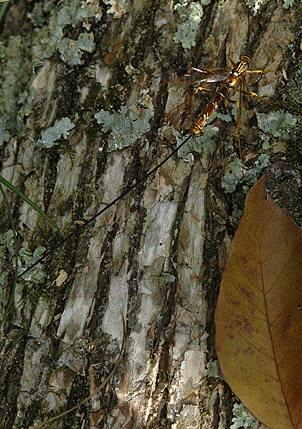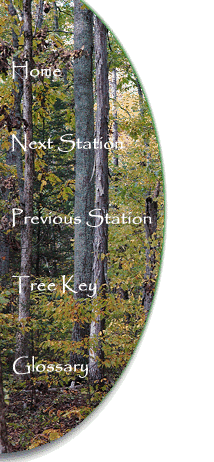| |
|
| |
 |
| |
Blue Ash Leaf |
Identification:
The fall leaf color of the Blue Ash is a pale yellow. The
leaves are pinnately
compound, smooth above and paler and hairy
below. The 7 to 11 leaflets are 3 inches
to 5 inches long and stalked. The
leaflet
margins are
serrate.
The leaves are 8 inches to 12 inches in length. Compare these
leaves to those of the White Ash. The leaves are
opposite, and
as the leaves fall observe the opposite branching of this tree.
| |
|
 |
|
|
Blue Ash Bark |
The bark of the Blue Ash is bluish
gray to brown-gray, and is thick-furrowed with interlacing ridges.
As the tree ages the bark becomes scaly, then shaggy.
The twigs of the Blue Ash are
very distinctive in that the young twigs are
square in
cross-section. Compare the twigs with those of the White Ash,
which are round in cross section. The twigs are stout, light
green to gray, either smooth or slightly hairy.
Leaf scars are
notched at the bud.
| |
|
| |
 |
| |
Blue Ash Samaras |
In the fall you may find some of
the Blue Ash samaras on the trail in the vicinity of Station Eight.
Note the difference in shape between the samaras of the Blue Ash and
the Samaras of the White Ash. The wing of the samara
completely encloses the seed in the Blue Ash.
Other Uses
and Lore:
The Blue Ash takes
its common name from the fact that twigs or inner bark immersed in
water will turn water blue. In fact the pioneers used the twigs and
bark to make a blue dye. The species name, quadrangulata,
refers to the four-sided twigs (see image on previous page). The
wood is heavier than white ash, and is very strong and
course-grained. It is used for rough construction, fence posts, and
for handles for spades, shovels and similar tools. It is a common
lumber for cabinetry and furniture.
A variety of
wildlife eat the seeds, including eastern gray squirrel, eastern
cottontail and white-tail deer.
The
Trail From Station Eight to Station Nine
 |
| Ichneumon
Wasp |
From Station
Eight, begins to flatten out somewhat as it gets closer to the West
Fork of the Stones River. The limestone outcrops become fewer
as you descend, and you go through a very nice Eastern Redcedar
thicket. Look for signs of Cedar Apple Rust on the branches
and trunks of the Eastern Redcedars. Continue to look for
insects like the Ichneumon Wasp at right. Station Nine will be
on your right.
|

